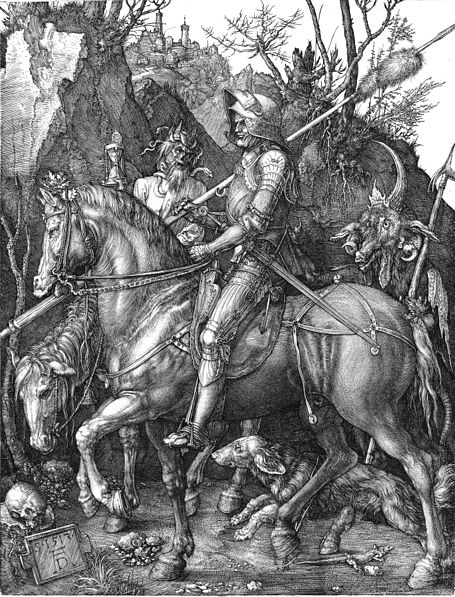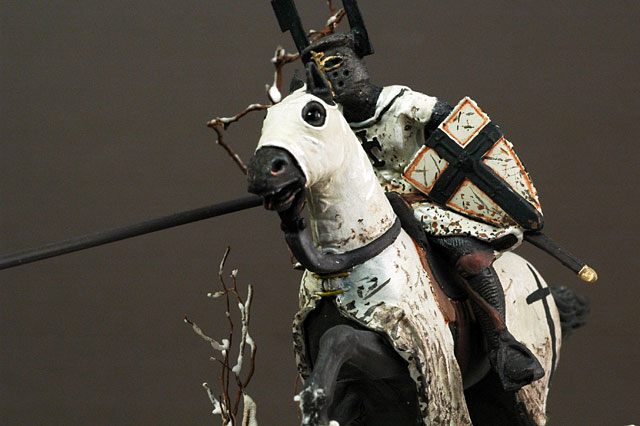Galloglaich
First Post
Thanks man.
One of these days I am going to in fact tackle Ninjas for this thread ... thats going to be a tough one
Here is a bit more on the Thieves Cant I was actually kind of rushed when I posted that. The Thieves Cant in particular is really cool and fun to introduce into your game
Wiki
Thieves' cant - Wikipedia, the free encyclopedia
There are several alleged Cant-to-English dictionaries online, here are a few examples:
The Thieves Guild - The Thieves Cant - Simple - Cant to English
Cool looking website for all things thievish for DnD actually
The Thieves Guild
Another even more extensive Cant dictionary
Canting Dictionary, letter A
Real or not, these are a lot of fun to browse through. Going through some of these terms gives you some ideas how rich the criminal underworld really was (if only in Elizabethan imagination) and how incredibly many specialist criminal jobs you could use in your campaign (many of these scream Adventure Hook) ... a few of my favorites:
ANGLERS, alias HOOKERS; petty Thieves, who have a Stick with a Hook at the End, wherewith they pluck Things out of Windows, Grates, &c. Make ready your Angling Stick; a Word of Command used by these petty Villains, to get ready the Stick with which they perform their Pranks, and as a Signal of a Prey in Sight. In the Day-time they beg from House to House, to spy best where to plant their Designs, which at Night they put in Execution.
KNIGHT of the Road, the chief Highwayman, best mounted and armed, the stoutest Fellow among them.
KIDLAYS, an Order of Rogues, who meeting a Youth with a Bundle or Parcel of Goods, wheedle him by fair Words, and whipping Six-pence into his Hand, to step on a short and sham Errand, in the mean Time run away with the Goods.
BARNACLES, the Irons worn in Goal by Felons. A Pair of Spectacles is also called Barnacles; as I saw the Cuffin Quire with his Nose Barnacled, making out the Cove's Dispatches, i.e. I saw the Justice of Peace with his Spectacles on making out his Mittimus.
PRAD LAY: the act of cutting the saddlebags of horses in order to steal their contents.
One of these days I am going to in fact tackle Ninjas for this thread ... thats going to be a tough one
Here is a bit more on the Thieves Cant I was actually kind of rushed when I posted that. The Thieves Cant in particular is really cool and fun to introduce into your game
Wiki
Thieves' cant - Wikipedia, the free encyclopedia
There are several alleged Cant-to-English dictionaries online, here are a few examples:
The Thieves Guild - The Thieves Cant - Simple - Cant to English
Cool looking website for all things thievish for DnD actually
The Thieves Guild
Another even more extensive Cant dictionary
Canting Dictionary, letter A
Real or not, these are a lot of fun to browse through. Going through some of these terms gives you some ideas how rich the criminal underworld really was (if only in Elizabethan imagination) and how incredibly many specialist criminal jobs you could use in your campaign (many of these scream Adventure Hook) ... a few of my favorites:
ANGLERS, alias HOOKERS; petty Thieves, who have a Stick with a Hook at the End, wherewith they pluck Things out of Windows, Grates, &c. Make ready your Angling Stick; a Word of Command used by these petty Villains, to get ready the Stick with which they perform their Pranks, and as a Signal of a Prey in Sight. In the Day-time they beg from House to House, to spy best where to plant their Designs, which at Night they put in Execution.
KNIGHT of the Road, the chief Highwayman, best mounted and armed, the stoutest Fellow among them.
KIDLAYS, an Order of Rogues, who meeting a Youth with a Bundle or Parcel of Goods, wheedle him by fair Words, and whipping Six-pence into his Hand, to step on a short and sham Errand, in the mean Time run away with the Goods.
BARNACLES, the Irons worn in Goal by Felons. A Pair of Spectacles is also called Barnacles; as I saw the Cuffin Quire with his Nose Barnacled, making out the Cove's Dispatches, i.e. I saw the Justice of Peace with his Spectacles on making out his Mittimus.
PRAD LAY: the act of cutting the saddlebags of horses in order to steal their contents.
























